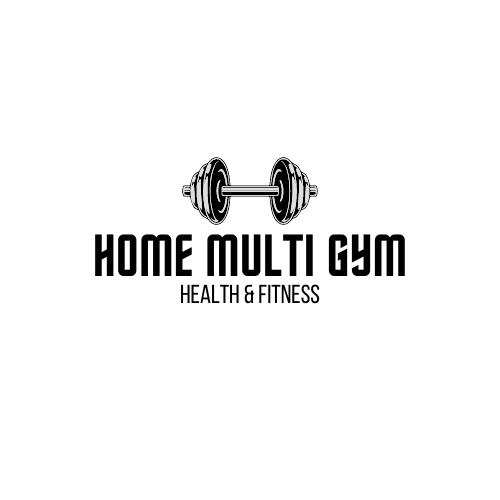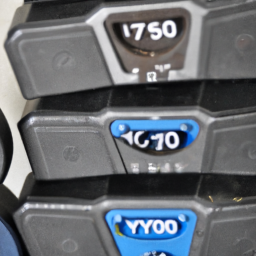Looking to add a home multi-gym to your workout routine? Wondering about its weight and how it might fit into your space? Well, in this article, we’ll dive into the average weight of a home multi-gym and give you some insights on what to consider when purchasing one. Whether you have limited space or specific weight restrictions, we’ve got you covered. Read on to learn more about the average weight of a home multi-gym and how it can enhance your home workouts.
Curious about the weight of a home multi-gym? In our article, we’ll provide you with the average weight range of these fitness machines, from compact models to larger, more robust options. We’ll also discuss the factors that contribute to the weight of a home multi-gym, including the materials used and the variety of exercises it offers. Additionally, we’ll share some tips on how to choose the right weight for your specific needs and the importance of considering your available space. So, if you’re ready to take your home workouts to the next level, keep reading to find out more about the average weight of a home multi-gym.
Benefits of a home multi-gym
Improved convenience and accessibility
Having a home multi-gym offers unmatched convenience and accessibility. You no longer have to worry about commuting to the gym or sticking to their schedule. With a multi-gym at home, you have the freedom to work out whenever you want, saving time and energy.
Variety of exercises for full-body workout
A home multi-gym provides a wide range of exercise options, allowing you to target and train different muscle groups for a comprehensive full-body workout. With workout stations for various exercises like chest press, leg curl, lat pulldown, and more, you can ensure your entire body gets the attention it needs.
Time and cost savings compared to gym memberships
Investing in a home multi-gym can save you both time and money in the long run. With a multi-gym, you eliminate the need for a gym membership that requires monthly payments. Additionally, you can avoid the time-consuming process of waiting for equipment during peak hours at a public gym. The upfront cost of a home multi-gym is a one-time investment that pays off in the long term.
Factors impacting the weight of a home multi-gym
Material construction
The material used in the construction of a home multi-gym greatly impacts its weight. Steel-based multi-gyms tend to be heavier compared to those made from lighter materials like aluminum. The choice of material not only affects the weight but also the durability, stability, and overall quality of the machine.
Number and type of workout stations
The number and type of workout stations present in a home multi-gym influence its weight. Multi-gyms with a higher number of stations, including multiple weight stacks, tend to be heavier. Each additional station adds weight to the overall structure, so it’s important to consider your specific workout needs before choosing a multi-gym with features that may not be relevant to your fitness goals.
Attachment options and accessories
The presence of various attachment options and accessories can also affect the weight of a home multi-gym. Multi-gyms with additional attachments like pull-up bars, dip bars, and leg press attachments will generally be heavier due to the extra components. While these accessories offer versatility, it’s essential to consider whether you will actually utilize them to justify the added weight.
Weight range of home multi-gyms
Lightweight multi-gyms (under 100 lbs)
Lightweight home multi-gyms typically weigh under 100 pounds. These compact and portable options are suitable for individuals with limited space or those who prefer to move the equipment around frequently. However, lighter multi-gyms may not provide the same level of stability and durability as their heavier counterparts.
Medium-weight multi-gyms (100-200 lbs)
Medium-weight multi-gyms range between 100 and 200 pounds. These options strike a balance between portability and stability. They offer more variety in terms of exercises and are suitable for individuals who have enough space at home and want a solid workout experience without compromising on quality.
Heavyweight multi-gyms (over 200 lbs)
Heavyweight multi-gyms generally weigh over 200 pounds. These sturdy and robust machines provide the utmost stability and durability. They are designed for individuals who have sufficient space dedicated to their home gym and are serious about their fitness goals. Heavyweight multi-gyms offer a wide range of exercises and can handle higher levels of resistance.
Considerations for selecting the right weight
Fitness level and goals
When choosing the weight of a home multi-gym, it’s essential to consider your fitness level and goals. Beginners and casual exercisers may find lighter multi-gyms more suitable, as they allow for gradual progression. Intermediate and advanced fitness enthusiasts, on the other hand, may benefit from heavier multi-gyms that provide greater resistance for challenging workouts.
Available space and floor support
Your available space and floor support should also be taken into account. If you have limited space or a weak floor structure, opting for a lighter multi-gym may be more practical. However, individuals with ample space and sturdy floors can consider heavier multi-gyms, as they offer greater stability and a wider range of exercises.
Budget constraints
Budget is another important factor to consider. Lighter multi-gyms tend to be more affordable compared to their heavier counterparts. However, it’s essential to strike a balance between budget and quality. Investing in a durable, well-built multi-gym can provide long-term value, ensuring its longevity even with regular use.
Effectiveness of lighter vs heavier multi-gyms
Benefits of lighter multi-gyms
Lighter multi-gyms have their own set of advantages. They are easier to move and store, making them a suitable choice for individuals who have limited space or frequently relocate. Lighter multi-gyms are also ideal for individuals who focus on cardiovascular exercises or prefer higher repetitions with lower resistance.
Benefits of heavier multi-gyms
Heavier multi-gyms offer several benefits as well. With greater stability and durability, heavy multi-gyms can handle intense training sessions and heavier resistance. They are particularly beneficial for individuals aiming to build muscle mass or increase their overall strength. Heavy multi-gyms often come with additional attachments and accessories, providing a wider range of exercises.
Personal preferences and workout intensity
Ultimately, the choice between a lighter or heavier multi-gym depends on personal preferences and workout intensity. Some individuals may prefer the convenience and flexibility of lighter options, while others may prioritize stability and heavy resistance.
Recommended weight range for different users
Beginners and casual exercisers
For beginners and casual exercisers, a lightweight multi-gym (under 100 lbs) is generally recommended. It allows for gradual progression and accommodates individuals who are just starting their fitness journey.
Intermediate and advanced fitness enthusiasts
Intermediate and advanced fitness enthusiasts can benefit from medium-weight multi-gyms (100-200 lbs). These options provide a wider range of exercises, higher resistance levels, and increased stability.
Professional athletes and bodybuilders
Professional athletes and bodybuilders who require intense training sessions and substantial resistance should consider heavyweight multi-gyms (over 200 lbs). These robust machines provide the durability, stability, and versatility necessary for their specific fitness goals.
Considerations for home setup and assembly
Available space and room dimensions
Before purchasing a home multi-gym, it’s crucial to assess the available space and room dimensions in your home. Ensure you have enough space to accommodate the multi-gym, considering both its footprint during use and the space required for safe and comfortable exercise.
Flooring and support requirements
The type of flooring and support in your home gym area is another consideration. Heavy multi-gyms require solid flooring and adequate support to ensure safety and prevent any damage to your home. It’s important to assess your floor’s weight-bearing capabilities and consider using appropriate flooring mats or protectors.
Ease of assembly and portability
When selecting a home multi-gym, consider the ease of assembly and portability. Some multi-gyms come with complex assembly instructions, while others are relatively straightforward. Additionally, if you have plans to move or rearrange your setup frequently, a lighter, more portable multi-gym may be more suitable for your needs.
Maintenance and care for home multi-gyms
Regular cleaning and dusting
To ensure the longevity of your home multi-gym, regular cleaning and dusting are vital. Wipe down the surfaces and upholstery of the machine regularly to prevent dirt and sweat buildup. Use a mild detergent or cleaning solution suitable for the specific materials used in your multi-gym construction.
Inspecting and tightening bolts
Regularly inspecting and tightening bolts is crucial for maintaining the stability and safety of your home multi-gym. Due to the constant use and vibrations, bolts may loosen over time. Ensure all bolts and hardware are securely tightened to prevent any accidents or damage during your workouts.
Lubrication of moving parts
Applying lubrication to the moving parts of your home multi-gym is essential to ensure smooth and quiet operation. Consult the manufacturer’s instructions for the appropriate lubricant and method of application. Proper lubrication will not only extend the lifespan of your machine but also improve its overall performance.
Common misconceptions about home multi-gym weight
Weight doesn’t directly indicate quality
Contrary to popular belief, the weight of a multi-gym does not necessarily indicate its quality or effectiveness. While heavier multi-gyms may offer greater stability and durability, lightweight options can still provide a satisfactory workout experience if they are well-built and properly designed.
Weight distribution and stability
Weight distribution and stability are more important factors to consider than the overall weight alone. A well-designed multi-gym with proper weight distribution will offer excellent stability, even if it is relatively lightweight.
Personal preferences and workout variations
Personal preferences and the variety of workout exercises you plan to perform also play a significant role in the weight of a home multi-gym. Depending on your workout routine and fitness goals, you may find that a lighter or heavier multi-gym is more suitable for your specific needs and preferences.
Conclusion
Weight plays a significant role in choosing a suitable home multi-gym. The average weight of a home multi-gym can vary depending on factors such as material, workout stations, and accessories. Consider your fitness goals, available space, and personal preferences to make the best decision. Remember that the weight of a multi-gym does not determine its quality, and weight distribution and stability should be prioritized. Regular maintenance and care will ensure the longevity of your home multi-gym, allowing you to enjoy its benefits for years to come.

